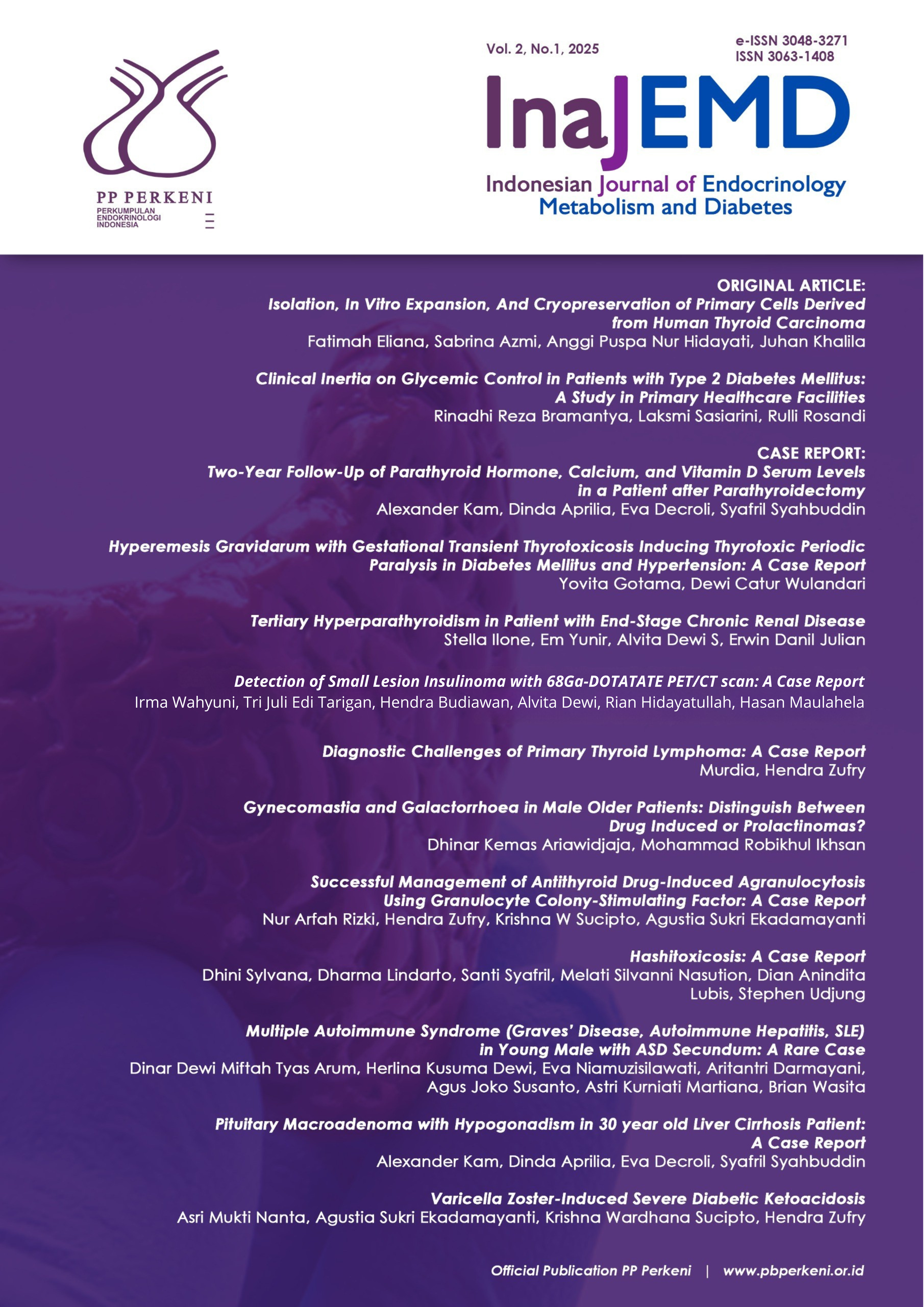Successful Management of Antithyroid Drug-Induced Agranulocytosis Using Granulocyte Colony-Stimulating Factor: A Case Report
Keywords:
Agranulocytosis, grave's disease, antithyroid drug, granulocyte colony-stimulating factorAbstract
Agranulocytosis is a rare condition and occurs in all age groups. Incidence ranges from 6 to 8 cases per million population per year. About 70% of the cases are found to be involved with medication usage. The use of granulocyte colony-stimulating factor (G-CSF) is effective for ATD-induced agranulocytosis, though some patients do not respond. A 22-year-old female was diagnosed with Grave's disease (GD) three months ago and began using Methimazole (MMI) at an initial dose of 20 mg/day. She was taken to the emergency room after complaining of a fever and stomachache for a week. Laboratories: The patient had leucopenia (white blood cell count 2040/mm3) and severe neutropenia, with an absolute neutrophil count (ANC) of 122.4/μL, thyroid stimulating hormone (TSH) of 0.005 IU/mL, and free thyroxine (FT4) of 46.81 pmol/L. The patient received G-CSF, which normalized her neutrophil counts after the first injection and resolved her fever. She was recommended to quit methimazole therapy. MMI is thionamide used as a first-line treatment for GD. The most severe side effect is agranulocytosis. Agranulocytosis can have various presentations; it most frequently occurs between 2 weeks and 3 months after the initiation of treatment. If the patient recovers, granulocytes begin to reappear in the periphery within a few days to 3 weeks. This drug-induced agranulocytosis is a lethal condition but reversible if recognized early and treated accordingly. G-CSF may shorten the recovery period.
Downloads
Downloads
Published
Issue
Section
License
Copyright (c) 2025 Journal

This work is licensed under a Creative Commons Attribution-NonCommercial-NoDerivatives 4.0 International License.
Authors retain copyright and grant the Indonesian Journal of Endocrinology, Metabolism and Diabetes (InaJEMD) the right of first publication with the work simultaneously licensed under a Creative Commons Attribution-NonCommercial-NoDerivatives 4.0 International License (CC BY-NC-ND 4.0) that allows others to share the work with an acknowledgement of the work's authorship and initial publication in this journal.
© Indonesian Journal of Endocrinology, Metabolism and Diabetes (InaJEMD). Published by the Indonesian Society of Endocrinology (PERKENI).





